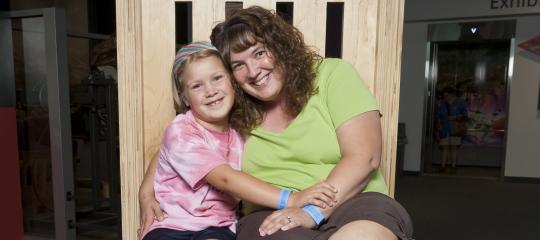Work in pairs. One person will be “whole,” the other is “half.”
WHOLE holds hands apart (can be horizontal or vertical—try both).
HALF puts one hand half-way between WHOLE’s hands.
WHOLE can move hands together and apart and HALF needs to adjust accordingly.
Switch roles.
Variations: WHOLE holds hand above floor.
HALF places hand between hand and floor.
WHOLE walks along a set distance (about 5 feet),
HALF walks half as fast.
For an extra challenge, have one person move one quarter as fast or one third as fast. If you have access to a digital camera, try capturing pairs on video to analyze movements. How close did they come to the goal?
Discuss: Which partner had to move farthest? Fastest? Explain your thinking.
Activities
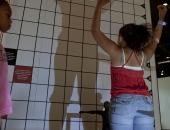
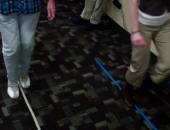
Work in pairs.
Put 2 pieces of masking tape parallel on the floor, 6–10 feet long. Several pairs can do this concurrently if there is space.
Ask each pair to walk along the taped lines at the same rate.
Then partner A uses the same rate, but partner B needs to walk half as fast, then twice as fast.
Switch roles.
Discuss:
- How can you tell how fast you were moving?
- How did you know if you were moving half or twice as fast?
- What would help you do this?
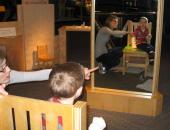
Best for ages 7-8 and up
(You'll need a room with stuff in it for this activity)
Ask kids to quietly move around a room to find objects that meet the description given below.
How do they know when they have chosen a correct-sized object?
- Find something that is 3 times longer than your thumb.
- Find an object that has 2 times the circumference of your arm.
- Find something that is 1/2 as wide as a piece of paper.
- Find an object that is 10 times longer than your foot.
Tricky tasks:
- Find an object that is 1 times longer than your hand.
- Find an object that is 4.5 times longer than your pinkie.
- Find an object that has 1/2 the circumference of your head.
- Find an object that is as big as you.

Practice “math talk” in daily conversations.
These prompts are excellent for facilitating youth interactions at museum exhibits too.
- What did you notice?
- How are these similar?
- How are these different?
- What is common?
- What is the relationship between ______ and ______.
- How are they alike?
-
What do you see?
- What else do you see?
- What else?
Encourage youth to provide more details- using gestures and/ or quantitative language
Books
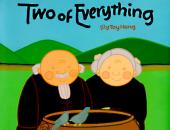
Based on a Chinese folk tale, this simple story introduces a “magic pot” that doubles everything that goes in. Good introduction to function tables for younger students.
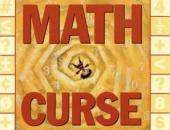
The story in which the narrator is afflicted with a "math curse" that affects how she views every facet of her day ("Everything seems to be a (math) problem").
Illustrations of math connections to real life.
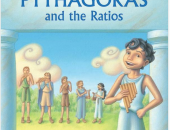
Pythagoras and his cousins are out to win a music contest, but first they need to figure out how to play their instruments in tune, this is something that's never been done before. Pythagoras makes an important discovery while trying to solve the problem: notes that sound pleasant together have a certain mathematical relationship.
Online resources

Math Game activities. There are a number of ratio games: Single or multi-player games to build ratio recognition skills.
Website is produced by www.4Kids.org. It is a weekly newspaper feature and Web site produced at the University of Kansas by a team of educators and students with support from Advanced Learning Technologies in Education Consortium (ALTEC).

A terrific and fun website where scale issues are brought to life interactively.
Created by Cary Huang ( with technical support from Michael Huang)
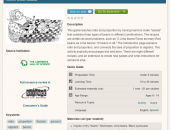
This game teaches ratio and proportion by having learners make "salads" that combine three types of beans in different combinations. The recipes are written as word problems, such as "2 Lima beans/Twice as many Red beans as Lima beans/ 10 beans in all."
A resource from the Lawrence Hall of Science, through the wonderful Howtosmile.org website.
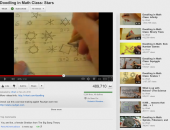
The author, Vi Hart, creates mathematical videos. "This is a series of videos about doodling in math class." This specific video explores drawing stars as a way to look at ratios and proportion. This video links to the Drawing Proportional Shapes with Gears and (at SMM) the Circle Ratios exhibits.
You can learn more about Vi Hart here.
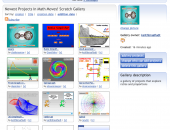
This is a gallery of Scratch projects that explore different ideas in ratio and proportion. Click on the project you like to explore the activity.
Scratch is a free application you can download from the MIT Media Lab for your Windows or Mac computer that lets you create animations, interactive programs, slideshows and even games.
